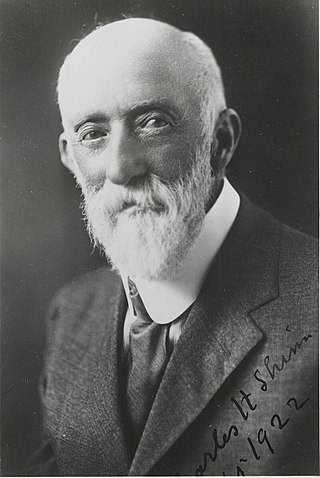
Harriet Elisabeth Beecher Stowe was an American author and abolitionist. She came from the religious Beecher family and wrote the popular novel Uncle Tom's Cabin (1852), which depicts the harsh conditions experienced by enslaved African Americans. The book reached an audience of millions as a novel and play, and became influential in the United States and in Great Britain, energizing anti-slavery forces in the American North, while provoking widespread anger in the South. Stowe wrote 30 books, including novels, three travel memoirs, and collections of articles and letters. She was influential both for her writings as well as for her public stances and debates on social issues of the day.

The Fair Oaks Bridge is a truss bridge over the lower banks of the American River, connecting Fair Oaks to the greater Sacramento, California region. The current bridge, built 1907-1909 at a cost of $63,000, is the third bridge at this location.
Lancaster Farming is the leading regional farm newspaper for the Northeastern and Mid-Atlantic United States.
Farm Progress is the publisher of 22 farming and ranching magazines. The company's oldest publication began in 1819. Farm Progress Companies is owned by Informa.

Charles Henry Howard was an officer in the Union Army during the American Civil War, and a newspaper editor and publisher. He was the younger brother of Union general Oliver O. Howard.

Prairie Farmer is a weekly newspaper which covers agricultural and rural news in the state of Illinois. It was first published in 1841 in Chicago, Illinois by John Stephen Wright and was called The Union Agriculturist and Western Prairie Farmer. Its original masthead proclaimed that it was devoted to "western agriculture, mechanics, and education." Prairie Farmer is owned by Farm Progress, a subsidiary of British publisher Informa.

Better Farming was a monthly newspaper from the early 20th century that originated in Chicago, Illinois. It provided information about best practices in agriculture and housekeeping. Along with farming advice, fiction and nonfiction pieces, and advertisements, it offered articles for children as well.

Chicago Livestock World was a daily newspaper published at the Union Stock Yards in Chicago, Illinois in 1900. Located in Chicago's meatpacking district, it reported information about the livestock market, agricultural advice, advertisements, and world news. The slogan on the masthead read: "World's Greatest Farm Newspaper." It was edited and managed by Ashleigh C. Halliwell and Will F. Baum.

The Chicago Packer (1899–1910) was a weekly newspaper published in the early 20th century which catered to the interests of commercial growers, produce handlers, and poultry farmers. It devoted to fruits, vegetables, butter, eggs and poultry. Specifically published out Chicago, Illinois as an edition of the Kansas City Packer there were other editions published out of New York City, New York, Cincinnati, Ohio, and Los Angeles, California.

Farm Press was a monthly farming-centered newspaper published out of Chicago, Illinois in the early 20th century. As expressed on the masthead, Farm Press succeeded the newspaper Farm, Field, and Fireside, and was combined with the newspaper Farm Folks. The slogan of the newspaper was "Devoted to the welfare of the farmer and his family."

Farm, Field, and Stockman was a weekly American newsletter published in 1884 in the Farm, Field, and Fireside family of farming and home newsletters. Its slogan was: "Agriculture, Gardening, Livestock, and Home Literature." It was merged in 1901 with Chicago, Illinois newspaper Model Farmer and became Farm, Field, Stockman and Model Farmer. After the merger, the newsletter was again combined with Wisconsin Agriculturalist in 1902.

The Farmers Voice was a weekly or bi-weekly American agriculture-focused newspaper published beginning in 1885. It was published out of Chicago, Illinois. The Farmers Voice focused on different topics about farming, homemaking, and children's interests.

Illinois Farmer was a monthly farming newspaper started in the early 1856 and edited by S. Francis in Springfield, Illinois. and continued to sometime around 1863. It was considered under the "umbrella" of Farm, Field, and Fireside newspapers. Its masthead proclaimed that the newspaper was devoted to the farm, the orchard, and the garden. It was published by Bailhache and Baker. Its editor was M.L. Dunlap

The Broad Ax (1895–1931) was a weekly newspaper that began publication on August 31, 1895, originally in Salt Lake City by Julius F. Taylor. After a series of conflicts with the Latter Day Saints, Taylor relocated the newspaper to Chicago in 1899. The Broad Ax has been described as "the most controversial black newspaper in Chicago in the late nineteenth century," in some ways due to its criticism of Booker T. Washington and Tuskegee Institute. The paper covered African American cinema.
The Gettysburgian is the monthly student magazine and digital publication for Gettysburg College in Gettysburg, Pennsylvania, United States. Originally called the Weekly Gettysburgian and first published in 1897, it currently provides local and campus news for the student population.

The Western Rural and American Stockman (1883-1895) was a semi-weekly newspaper published in Chicago, Illinois. It published articles about agriculture, livestock, and farm life in the United States during the late 19th century. Its editor was Milton George. It was associated with the Farm, Field, and Fireside collective of newspapers.
Western Rural was a weekly journal published in Chicago, Illinois and Detroit, Michigan. It existed between 1862 and 1901.

The Ohio Farmer was an agricultural newspaper established by Thomas Brown in Cleveland, Ohio in the mid-1800s. It was a weekly publication centered on farm and family life and provided sections for farming, housekeeping, and for children.

Charles Howard Shinn (1852–1924) was a horticulturalist, author, inspector of California Experiment Stations, and forest ranger in California.















